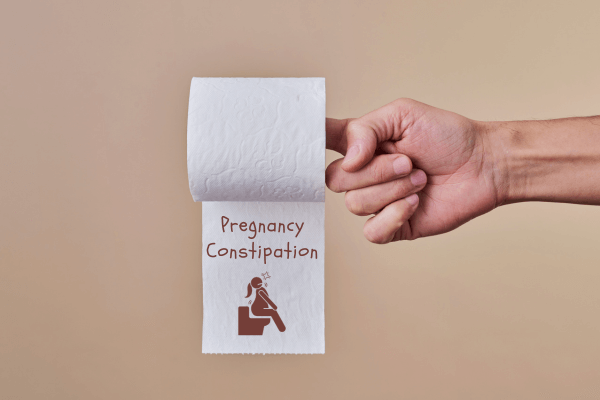You have just had a positive pregnancy test. What’s one of the first things you want to know? We bet, one of the first things you want to find out is when will you see your little bundle of joy for the first time!
As a pregnant woman (or even if you are trying to get pregnant), the terms Pregnancy Due Date or Estimated Due Date or Estimated Date of Delivery ( EDD as it is more frequently referred to) will come up quite often for you. The pregnancy due date indicates the estimated delivery date for a pregnant woman. While doctors and the medical team need to know the EDD for various medical and logistical reasons, it is only natural that once the pregnancy test is positive, one of the first things expectant parents would want to know is when their baby will be born.
There are many ways to calculate this date and we will cover them in this post
Why is it important to know one’s EDD?
Knowing the EDD, allows the parents to prepare for the baby – mentally, logistically and financially.
Along with letting you look forward to seeing and holding your baby, the estimated due date also helps in many other ways. There are many essential phases in a pregnancy that require an expected due date of delivery and therefore make an EDD calculator a crucial tool:
- The doctor uses the EDD to assess the progress of the pregnancy.
- It’s also used to check the growth of the foetus as per its age.
- There are tests and scans that are scheduled based on the EDD
- The EDD is used to calculate whether a birth is pre (before 37 weeks), early (37-38 weeks), full (39-40 weeks), late (week 41) or post term (week 42 or after). This helps to expect, and manage any complications that could arise from a baby coming too early or a pregnancy continuing into late or post term.
EDD Calculation Methods
A pregnancy usually lasts about 40 weeks (280 days) from the first day of your last menstrual period (also called LMP) to your due date. A Pregnancy Due Date Calculator helps you estimate your due date. The calculator could use different methods to run a calculation of your EDD. The most commonly used method is the LMP (Last menstrual period) method. Other methods could be based on the date of your last ultrasound scan or the conception date, or the IVF 3-day or 5-day transfer date.
LMP method
On average, pregnancies are 40 weeks long from the first day of the last menstrual cycle, so you could just take a calendar and count to 40 weeks from the first day you last got your period and that would give you your EDD.
Conception date method
In some cases (if you are diligently tracking your ovulation) you might know the exact date of conception. You can then calculate your due date by adding 266 days to your conception date to get your pregnancy due date.
IVF 3-day or 5-day transfer date method
If you conceived through IVF (in vitro fertilization), you can reach your due date using the transfer date. If your embryo transfer was done on day 3 of fertilization add 263 days and if the transfer was done on day 5 then add 261 days to the transfer date to get your EDD.
Ultrasound scan method
If you don’t have any of the information that we have listed above, worry not! Your doctor can help calculate the EDD during your first prenatal appointment.
When you suspect you are pregnant or get that positive line on your pregnancy test, book an appointment with your gynecologist for an ultrasound. Early ultrasounds are an excellent way to get to the EDD. The ultrasound can be used to determine the gestational age of the fetus and you can then calculate the EDD by adding the remaining days to get to 40 weeks.
Some things to keep in mind
- It’s important to understand that one doesn’t necessarily get pregnant on the date of being sexually active. The egg fertilisation may take place upto 6 days after. That’s why the pregnancy due date calculator is recommended by experts to know your due date, which considers many factors before calculation. Your ultrasound tests will help you reveal the progress of the foetus.
- You will find many pregnancy due date calculators online. All you have to do is to pick the calculation method, enter the relevant date and Voila! you will have your EDD. For e.g. if you pick the menstrual period calculation method, the calculator will need the first day of your last period and your cycle length (which could be more or less than 28 days). The duration of the pregnancy is usually 37 weeks to 42 weeks from the first day of a woman’s last period.
- Remember that each pregnancy is unique and whatever the result from the calculator, it’s just an estimate and should not be taken as a fixed date. Babies, even in the womb, have a mind of their own and could decide to ignore the precious EDD you seem to cling to and live by during your pregnancy. They could come earlier or decide to enjoy their cozy little home for longer. So mama, go with the flow. It’s good practise for all the uncertainty that follows once the baby is finally in your arms.
You can connect with us at Veira Life to know more about your due date or any other concerns related to the pregnancy. We have an excellent online prenatal class to help you know what to expect during the pregnancy and how to best set yourself up to have a healthy and enjoyable pregnancy. Our experienced and deeply caring pregnancy coaches can address your questions and ease all anxieties. We also provide video consultation on demand with a wide range of prenatal and postnatal experts. At Veira we are passionate about providing you with the highest level of support, specially personalised to your specific needs and accessible to you in the comfort of your home, so that you can enjoy each phase of this journey.
Expecting? Know when with our EDD calculator-








FAQs
To calculate the expected delivery date, start with the first day of the last menstrual period and add 280 days to it. This is the LMP (last menstrual period) method. The estimation may vary and your healthcare provider could provide a different due date after ultrasound.
To calculate your pregnancy delivery date, count 280 days (40 weeks) from the first day of your last menstrual period.
LMP stands for Last Menstrual Period and refers to the date of the first day of a woman’s last menstrual cycle. EDD stands for Estimated Due Date and is an estimation of when a pregnant woman is expected to give birth.
EDD in pregnancy is an estimate and not an exact date. Only about 5% of babies arrive on their due date, so it’s important to remember that it’s just an estimate and not a guarantee. Focusing too much on the EDD can cause unnecessary stress.
LMP is commonly used to determine gestational age and EDD in clinical practice, but ultrasound estimates are more reliable when there is a discrepancy of more than 1 week.







